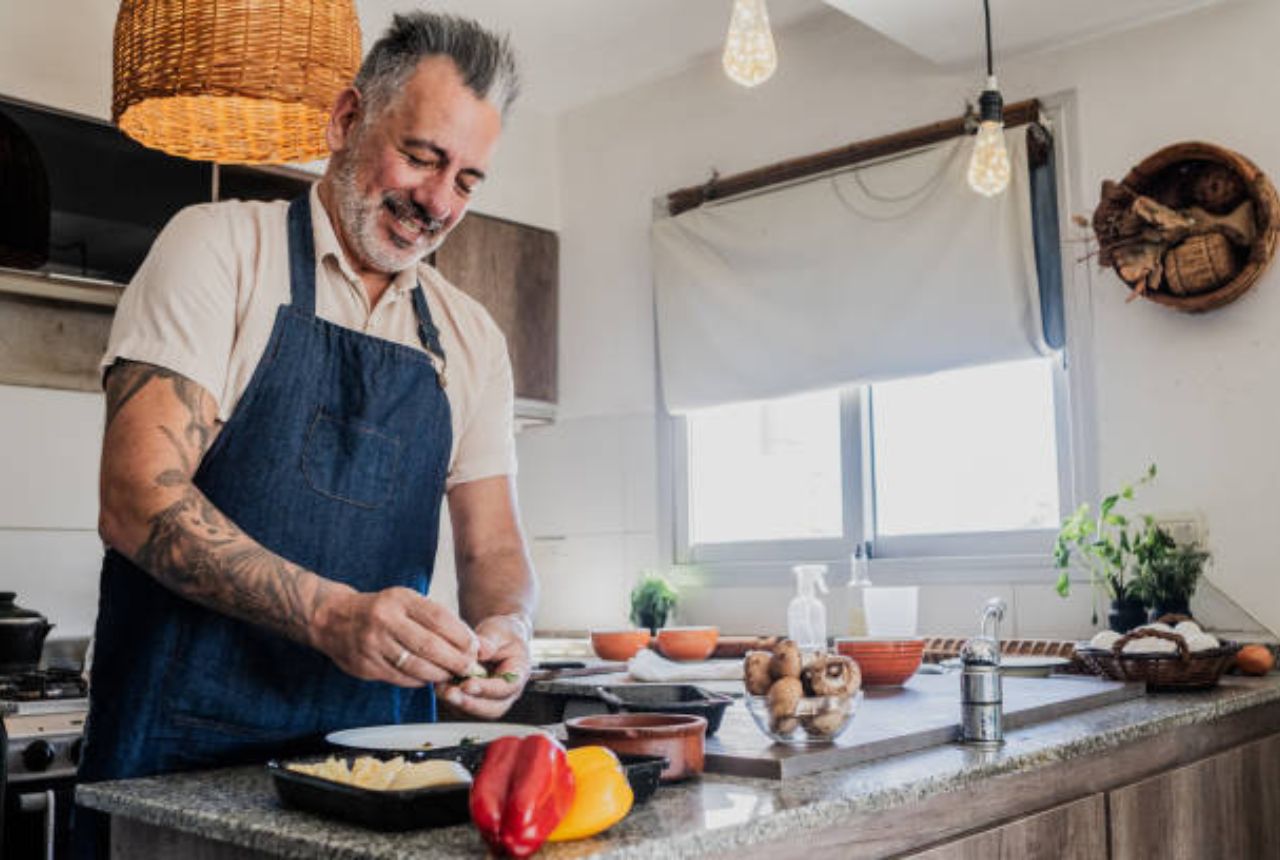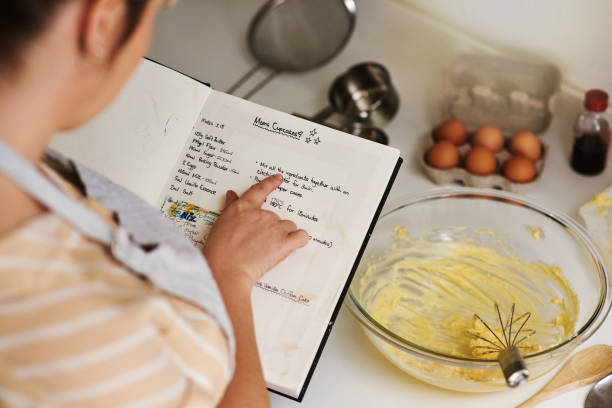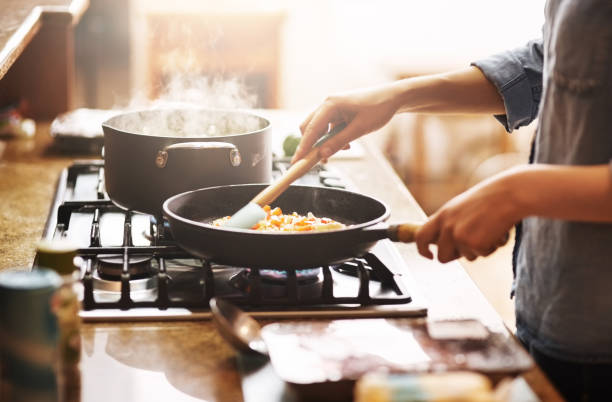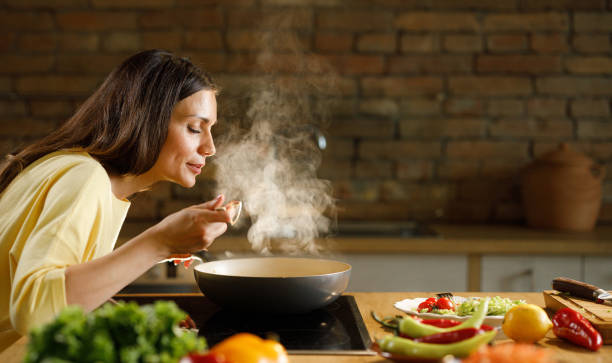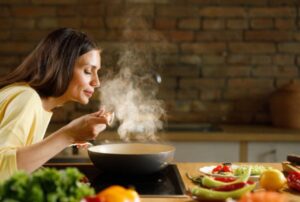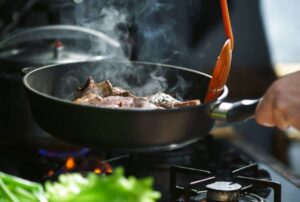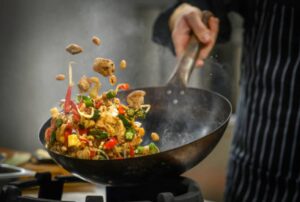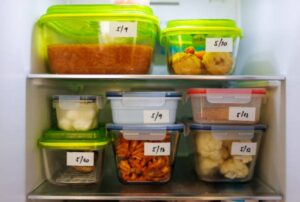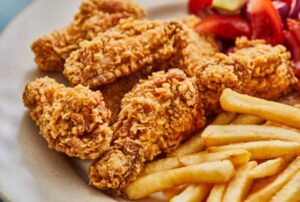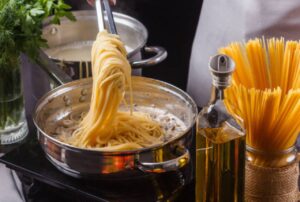Let’s be honest—we’ve all burned toast, overseasoned pasta, or straight-up murdered a chicken breast at some point. Cooking isn’t always as glamorous as those TikTok chefs make it look. But hey, good news: you don’t have to attend culinary school to level up your kitchen game. Sometimes, it just takes knowing what not to do.
So, if you’ve ever thought, “Why does this recipe look nothing like the picture?”—you’re not alone. Let’s fix that, shall we? Here are 10 common cooking mistakes (yep, probably more common than pineapple on pizza) and how you can avoid them like an absolute pro.
1. Not Reading the Entire Recipe First
Ever thrown everything into the pan… only to realize you were supposed to marinate it overnight? Yeah, same.
This rookie move can ruin even the best intentions.
Why It Matters:
- Recipes often have timing cues (like “rest for 2 hours” or “serve immediately”).
- You might miss prep instructions, leading to frantic chopping while your garlic burns.
Pro Tip:
Before you turn on the stove, read the entire recipe. Twice, if you’re easily distracted (no judgment). It’ll save you from culinary chaos.
2. Using the Wrong Pan Size
Size does matter—at least in the kitchen.
The Problem:
- A small pan = overcrowded food = steamed, not seared.
- A giant pan = burnt bits and uneven cooking.
What to Do Instead:
Use a pan that comfortably fits your food with a little room to breathe. Crowding the pan is like inviting too many guests to a dinner party—chaos every time.
3. Skipping the Preheat
You might think, “Why waste five minutes waiting for a pan to heat?” But trust me, cold pans are where flavor goes to die.
Here’s the Deal:
- Proteins don’t brown properly on cold surfaces.
- Cold ovens can mess with baking chemistry—and nobody wants flat cookies.
Fix It:
Always preheat your oven and pans. That sizzle when food hits the pan? That’s the sound of victory.
4. Not Seasoning As You Go
Dumping salt on at the end and hoping for magic? That’s wishful thinking, my friend.
Why It Doesn’t Work:
- Seasoning only at the end = flat flavor.
- Food needs time to absorb those good vibes (aka spices).
Pro Move:
Season in layers—a pinch while sautéing, a dash before simmering, a final taste at the end. You’re building flavor like a boss.
5. Overcrowding the Pan
Did I mention this earlier? Yeah. It’s that important.
What Happens:
- Food releases steam.
- Steam can’t escape.
- Your meal ends up soggy. Ew.
Real Talk:
If you’re cooking for four and your pan only fits two, cook in batches. Or get a bigger pan. Or just order takeout—JK, don’t do that.
6. Cutting Meat Right After Cooking
You spent 20 minutes searing that steak to perfection. Then you immediately slice into it. Why?? WHY??
What Goes Wrong:
- Juices spill everywhere.
- You’re left with a dry, sad slab of meat.
Solution:
Let your meat rest for 5–10 minutes before slicing. It gives the juices time to redistribute. Trust me, the wait is worth it.
7. Not Tasting As You Cook
Imagine painting a masterpiece without checking the colors. Sounds ridiculous, right? Same goes for cooking.
The Risk:
- You over-season.
- You under-season.
- You end up playing culinary roulette.
Avoid It:
Taste. Adjust. Taste again. Your taste buds are your best kitchen tool.
8. Using Dull Knives
This one’s personal. I once tried to slice a tomato with a butter knife. It ended with me crying into a pile of pulp.
Why It’s a Problem:
- Dull knives are more dangerous than sharp ones.
- They make prep work frustrating and slow.
The Fix:
Sharpen your knives regularly. You don’t need a fancy knife set—just keep the ones you use in good shape. And yes, a tomato deserves better.
9. Cooking Everything on High Heat
Blast the burner to 10 and hope for the best? That’s not cooking, that’s gambling.
What Goes Wrong:
- You burn the outside and leave the inside raw.
- You destroy delicate ingredients (hi, garlic) in seconds.
Cook Like a Pro:
- Use medium or low heat for simmering and sauces.
- Save high heat for quick sears and boiling water.
- Be patient. Food’s not going anywhere. (Unless you’re cooking popcorn.)
10. Guessing Measurements (When You Shouldn’t)
Look, I get it—eyeballing flour feels rebellious. But if you’re baking, guessing is a crime against carbs.
Baking ≠ Cooking:
- Too much flour? Dry, dense cake.
- Too little? Flat, sad cookies.
- Salt instead of sugar? Been there. Not fun.
The Pro Move:
Use measuring cups and spoons. Especially when baking. Cooking gives you room to improvise; baking does not. It’s basically edible science.
Bonus Tips You Didn’t Ask For (But Totally Need)
Use a Thermometer
Want to know if your chicken is cooked without slicing it 5 times? Get a meat thermometer. It’s a game-changer.
Clean As You Go
Cooking’s fun until your kitchen looks like a war zone. Clean as you cook—it saves time and your sanity.
Use Fresh Ingredients
Yes, that dried parsley from 2008 is technically edible. But fresh herbs and spices? Next level flavor.
Final Thoughts
Nobody’s perfect in the kitchen. Not even Gordon Ramsay (though he’ll never admit it). Cooking is a learning curve—you burn, you learn.
But avoiding these common mistakes? It makes the whole thing way less stressful and way more delicious. So next time you hit the kitchen, channel your inner pro and remember: read the recipe, taste often, and sharpen that darn knife.
And if you mess up? Well, that’s what delivery is for. FYI, pizza never judges.
Enjoyed the tips? Got any epic cooking fails to share? Drop ’em below—I promise I won’t laugh (much). 🙂
Ready to become the home cook your microwave fears? Let’s do this. 🍳🔥

